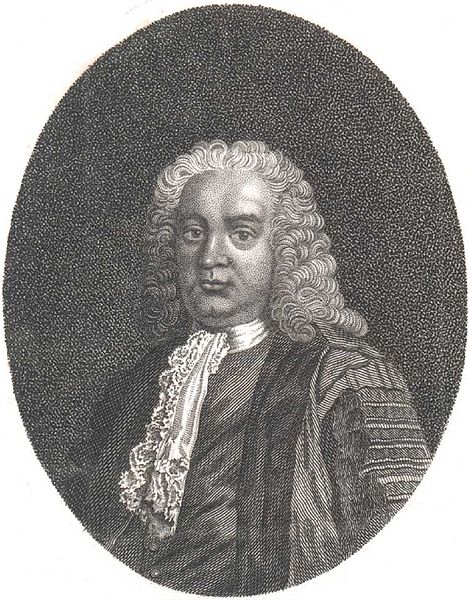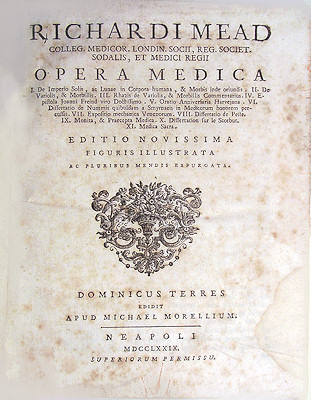<Back to Index>
- Physician Richard Mead, 1673
- Sculptor Joseph Nollekens, 1737
- Electress Palatine Anna Maria Luisa de' Medici, 1667


Richard Mead (11 August 1673 – 16 February 1754) was an English physician. His work, A Short Discourse concerning Pestilential Contagion, and the Method to be used to prevent it (1720), was of historic importance in the understanding of transmissible diseases.
The eleventh child of Matthew Mead (1630-1699), Independent divine, Richard was born at Stepney, London. He studied at Utrecht for three years under JG Graevius. having decided to follow the medical profession, he then went to Leiden and attended the lectures of Paul Hermann and Archibald Pitcairne. In 1695 he graduated in philosophy and physics at Padua, and in 1696 he returned to London, entering at once on a successful practice.
His Mechanical Account of Poisons appeared in 1702, and, in 1703, he was admitted to the Royal Society, to whose Transactions he contributed in that year a paper on the parasitic nature of scabies. In the same year, he was elected physician to St. Thomas' Hospital, and appointed to read anatomical lectures at the Surgeon's Hall. On the death of John Radcliffe in 1714, Mead became the recognized head of his profession; he attended Queen Anne on her deathbed, and in 1727 was appointed physician to George II, having previously served him in that capacity when he was prince of Wales.
While in the service of the king, Mead got involved in the creation of a new charity, the Foundling Hospital, both as a founding governor and as an advisor on all things medical. The Foundling Hospital was a home for abandoned children rather than a medical hospital, but it is said that through Dr. Mead's involvement, the Foundling was equipped with both a sick room and a pharmacy. He is even supposed to have influenced the architect, Theodore Jacobsen, into incorporating a large court yard to promote the children exercising. A full size portrait of Dr. Mead, donated by the artist Allan Ramsay in 1747, ensures that his contribution will not be forgotten. The painting currently hangs at the Foundling Museum.
Mead's country estate was at Old Windsor in Berkshire, but he died at his house in Bloomsbury in 1754. It later formed the basis of Great Ormond Street Hospital. In
1755 Meade published ‘Medica Sacra; Or, A commentary on the most
remarkable diseases, mentioned in the Holy Scriptures’. He made use of
the work of his supposed relative Joseph Mede’s Doctrine of Demons and once patient Isaac Newton’s Chronology to argue that pagan ideas regarding demons had entered Christianity. Like Arthur Ashley Sykes and
others, Meade understood those afflicted by demons in the New Testament
to refer simply to those suffering from a variety of illnesses.